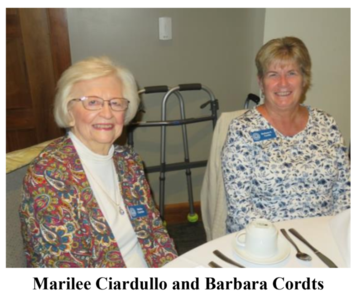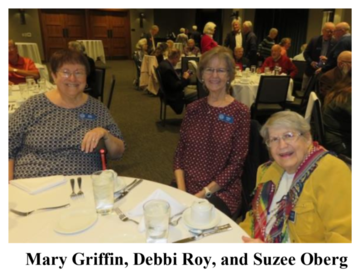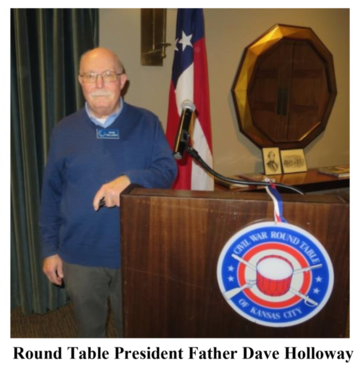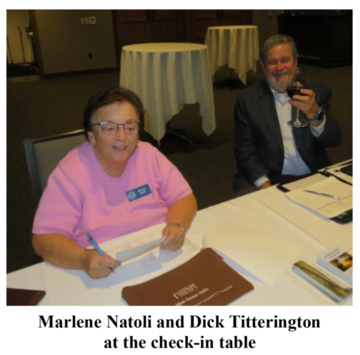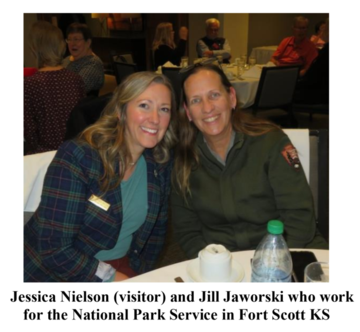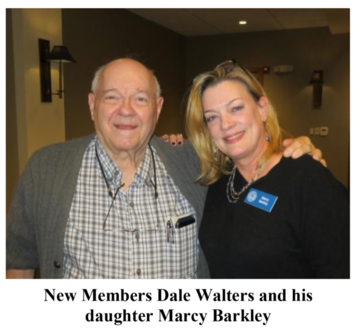November 2023 Meeting
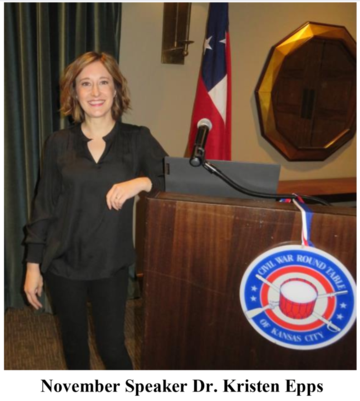
At the dinner meeting on November 15th, Dr. Kristen Epps, Associate Professor of History at Kansas State University, gave a very interesting presentation titled: “Freedom Seekers - Slavery and Emancipation on the Kansas-Missouri Border.” Dr. Epps explored slaveholding in this region that was peripheral to the main plantation economy, the deep roots of the Underground Railroad, and the system’s demise during the Civil War. Attendance at the meeting was 60.
The following is a summary of Dr. Epps’ presentation:
At Mound City KS, James Montgomery met with George Luther Stearns, one of the “Secret Six” that supported John Brown’s raid on Harpers Ferry in 1859. Montgomery then wrote a letter to people back east about “Freedom Seekers.”
Dr. Epps said the study of history requires us to do research, etc. However, it also requires us to learn the importance of the human story regarding slavery on the border.
The Border Develops: The western border of Missouri takes shape. Slaves working on farms provide agricultural labor. People are heading west on the Santa Fe, California, and Oregon Trails. There are over 10,000 slaves in Missouri. The majority live around St. Louis and some live in “Little Dixie” located in central Missouri.
Changes to the Border: The northwest corner of Missouri is finalized in 1837. Indian tribes are relocated to the Kansas Territory.
Missouri Compromise of 1820 balanced the desires of northern states to prevent expansion of slavery in the country with those of southern states to expand it. Missouri was admitted to the Union as a slave state and Maine was admitted to the Union as a free state.
Kansas-Nebraska Act of 1854 allowed the population of Kansas Territory to choose whether slavery would be legal. The Bleeding Kansas period was from 1854-1861. The conflict was over expansion of slavery in the west.
Manifest Destiny was a cultural belief in the 19th century United States that White American settlers were destined to expand across North America. Pro-slavery people wanted access to western resources. However, people favoring democracy and freedom did not want slavery. During this period most of the Indians were moved to Oklahoma Territory.
Popular Sovereignty is the principle that the leaders of a state and its government are created and sustained by the consent of its people, who are the source of all political legitimacy. People who can vote can choose whether a state should be free or slave. People began flocking to Kansas for land and for political beliefs. The vote helped to shape slavery’s destiny. There was partisan violence, arrests, murders, property burned, property plundered, etc.
The most famous raid on Lawrence KS was Quantrill’s Raid in 1863. However, Lawrence was also burned in 1856 because it was founded by the New England Emigrant Aid Company, a group of anti-slavery settlers from Massachusetts who were hoping to make Kansas a free state.
A lot of pro-slavery settlers moved into Kansas from Missouri. Their attitude was: “We shall beat you and establish slavery. We don’t give a damn about what northerners think.” The destiny of Kansas will impact the destiny of Missouri.
The Traditional View in Education: What if slavery came to Kansas? It had already existed on the Border since the 1820’s. People thought that slavery would not exist out west; chattel slavery was declining and would be phased out. However, slavery had succeeded thus far. It was flexible and existed in small areas.
In 1860, 16% of the population on the Border were slaves. There are not many sources detailing stories of the slaves. We mainly have stories from slave holders. Dr. Epps challenged the idea that slavery did not exist in Kansas. She said there were 200-400 people that were slaves in Kansas.
Based on the 1855 Kansas census, there were two or three slaves in a household at most. However, one household had 10 slaves. That gives a baseline. Threefourths of the slaves were less than 30 years old. Men and women were about equal in numbers. Most of the slaves came from Kentucky, Tennessee, and Missouri. The slave trade still existed.
Black resistance took the form of coercive behavior: theft, arson, running away, breaking tools, etc.
The Underground Railroad was called selfemancipation. There are not that many sources that we can use from slaves. They had to be secretive. The Fugitive Slave Act was passed in 1850. The act required that slaves be returned to their owners, even if they were in a free state. The act also made the federal government responsible for finding, returning, and trying escaped slaves. Slave commissioners were created. Jail time was initiated for not turning someone in. People were required to help catch fugitive slaves.
How the Underground Railroad Operated: It was not a single path. It was a flexible system of houses, etc. African-Americans were playing a key role as station masters. In Kansas, the Underground Railroad was active from 1857-1861. The majority of the settlers were pro-slavery. By 1857, more anti-slavery people were moving into the region. There were more free African-Americans living in Kansas. Dr. Epps said 800- 1,000 fugitives came through Douglas County KS.
In the border states of Maryland, Kentucky, and Missouri, the slaves had a better chance to escape. Women also escaped, but it was more difficult due to their children. They did escape through Kansas. The reasons for escaping are: If they suffered abuse, if they were sold away from their family, if this was their opportunity to escape, etc. Some escapes were planned, but some were spur of the moment. Being in the west made it easier to escape to freedom.
Dr. Epps told us stories about some of the Freedom Seekers, including Bill Riley, Charles Carr, and Charley Fisher.
Missouri was a slave state, but did not secede from the Union. Kansas was admitted as a free state in 1861. Formal emancipation was enacted by the 13th Amendment, which abolished slavery and involuntary servitude, except as punishment for a crime.
There was a labor shortage during the Civil War. Kansas supplied a lot of soldiers to the Union. The north needed agricultural labor. Freedom Seekers came to Kansas regardless. Blacks enlisted in the Union army.
Kansas Senator James Lane came back to Kansas in 1861 to start a Kansas brigade. He encouraged black men to fight. Lane saw an opportunity here. He couldn’t have recruited the 1st and 2nd Kansas Colored without the help of the black community. Thirteen states plus the Indian Territory made up the 1st and 2nd Kansas.
The first action by Black soldiers was at the Battle of Island Mound Missouri in October of 1862. The 1st and 2nd Kansas were mustered into the U.S. Army. They were what it truly meant to be Freedom Seekers.
Dr. Epps’ Concluding Thoughts:
- We cannot understand the history of this region without grappling with slavery’s presence. Many of the enslaved men and women lived in anonymity, but does not minimize the importance of their stories.
- The experiences of African-Americans on the border are central to understanding western settlement, Bleeding Kansas, and the coming of the Civil War. Indeed, the Civil War was just an extension of their long struggle for selfemancipation.
Photos from the Meeting
